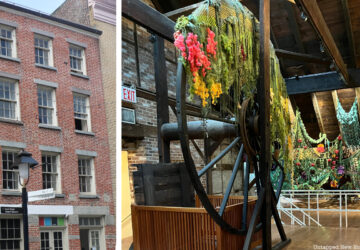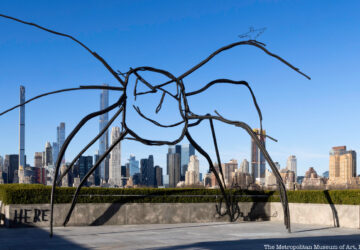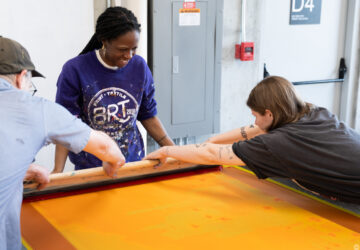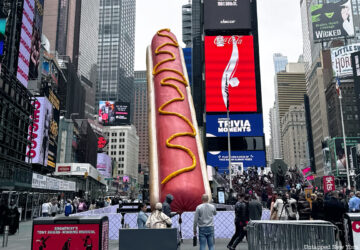
Gilsey House in the Tenderloin. Photo from Library of Congress.
On March 11, 1892, an uptight minister named Charles Parkhurst visited the Gramercy-area brothel of Hattie Adams as part of an undercover sting operation. Before the story was over, it roped in Tammany Hall, Teddy Roosevelt, and New York’s favorite rogue lawyers, Howe & Hummel, and offered a great snapshot of “Gay 90s” New York City.
Back in those days, so-called good-government groups battled corruption and vice together. This made them even less fun than their modern offshoots, but more politically potent. Few people crusaded against corruption and vice harder than New York Society for the Prevention of Crime president, the Rev. Charles Henry Parkhurst. Like our last two mayors, Parkhurst was Massachusetts-bred, and in 1880 he moved to New York to begin a 38-year run at the Madison Square Presbyterian Church.
Madison Square was a fun part of town, home to P.T. Barnum’s Madison Square Garden, countless saloons, and other dens of vice like gambling and prostitution, adjacent to the city’s infamous Tenderloin District. Parkhurst was on a personal crusade to shut the vice down, something he had to take into his own hands, with cops in on the take.

On the evening of Friday, March 11, Parkhurst met a detective he had hired named Gardner at the Hoffman House, an opulent hotel and bar on West 24th with a giant erotic painting as a centerpiece. Joined by a third named Erving, the group headed out for a night on the town, starting with the somewhat classy brothel of Ms. Hattie Adams on Madison Avenue between 27th and 28th Street.
Adams, 42 years old, had built a successful business, and her women were known as much for their exotic dancing as prostitution. Parkhurst, who had donned a disguise to avoid cops eager to bust the minister, sat alongside Erving and Gardner, watching seven scantily clad women dance the can-can to the tune of a blindfolded piano player. Parkhurst declined to participate in any of the fun, and he certainly raised Adams’ suspicion by angrily chasing away a woman who tugged his beard, but Gardner enjoyed some naked leapfrog (popular at the time) and Erving waltzed with a naked partner.
They left around 1am, but their night kept going strong, as Parkhurst demanded Gardner to “show me something worse.” One spot that really set Parkhurst off was the Golden Rule Pleasure Club, where a series of small rooms housed cross-dressing, face-painted gay men cooing at Parkhurst in falsetto.
On Sunday, Parkhurst devoted his church sermon to summarizing the scandal he had witnessed over the weekend, and accusing the police and political establishment of being in cahoots with the seedy underworld. The District Attorney reluctantly took up the Adams case, an account of which one can access through NY Times premium.
This wasn’t Adams’ first time in trouble, and she went, as usual, to Howe & Hummel, the legendary criminal defense duo that had defended the crooked and the damned for decades with remarkable success. Usually they would negotiate out a fine in situations like this, but the lawyers figured that by contesting the charge they could put Parkhurst on the witness stand and thoroughly embarrass him. As it turns out, Parkhurst was pretty unflappable. (Erving, not so much, as testifying about that night almost gave him a stroke.) Abe Hummel used his closing to blast the “slimy polluter of the Gospel,” bellowing, “I hold Hattie Adams’ character against all the Dr. Parkhursts in the universe.”
Though the Times wrote, “nobody believed there was a ghost of a chance for the defendant,” a split jury sent Adams home. In May she was re-tried, and sentenced to nine months in a prison on Blackwell Island, which is Roosevelt Island today.
Parkhurst was just getting started. His clamor about police corruption found sympathetic ears, including that of new police commissioner, Teddy Roosevelt. The Lexow Committee, the first of many prominent New York City police corruption investigations, caused a sensation. The public learned of a police department steeped in bribes from top to bottom, working hand in hand with Tammny Hall, which was drummed out of office during the 1894 elections. (They would be back soon enough.)
As for Hattie Adams and the prostitution scene in general, the police, even post-Lexow, mostly shrugged. Not particularly interested in enforcing prostitution laws, they’d face recurring pressure from moralists to make arrests, and when they did, they usually arrested the prostitutes themselves rather than johns or brothel owners, lacking as prostitutes were for shakedown money. That is more or less how the industry is policed to this day.
Read more from Today in NYC History on Untapped Cities and on janos.nyc





